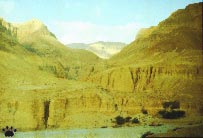
Desert Canyon, Arava, Israel.
Deserts - Part 3
Finally, here comes a desert canyon. Canyons
are usually the best places to see wildlife, especially if they are long, narrow,
remote and have some water sources inside. Canyons connecting Negev and Judean
deserts with Arava Rift are good examples - here you can find
leopards, ibexes, rock hyraxes (Procavia capensis), and other interesting
animals. Most large ungulates, however, tend to avoid canyons, where it is so
easy for predators to stalk them, and prefer open plains.
| African wild ass (Equus asinus) inhabits some
of the most inhospitable parts of the world's deserts - dry bottoms of rift valleys
around the Red Sea. Unfortunately, it is now almost extinct. |
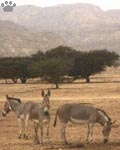
African wild ass,
Arava, Israel. |
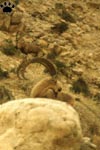
Ibex (Capra nubica),
Nahal David, Israel. |

Ibex (Capra nubica),
Nahal David, Israel. |

Arabian oryx, Arava, Israel |
Hai Bar nature preserve in Arava Rift,
Israel, is the last place in Asia where this beautiful animal can be seen, together
with slightly less rare Arabian oryx (Oryx leucoryx) and addax (Addax
nasomaculatus). A more colorful species of oryx is still common in parts of Africa. |

Addax, Arava, Israel. |
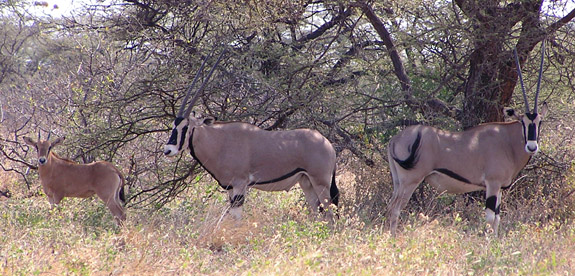
Family of beisa oryxes (Oryx dammah beisa), Buffalo Springs National Reserve, Kenya. |
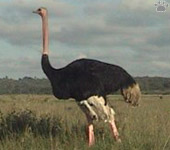
Ostrich, Tsavo West National Park, Kenya.
|
Deserts and dry savannas of Africa are generally the best ones to see large animals, including the world's largest terrestrial mammal - African elephant (Loxodonta africana) and largest bird - ostrich (Sturthio camelus). There are also interesting small animals and plants, but most visitors don't notice them. |
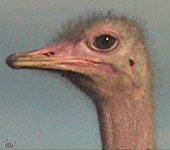
Ostrich, Tsavo West National Park, Kenya.
|

Gerenuk (Litocranius walleri), Samburu
National Reserve, Kenya. |
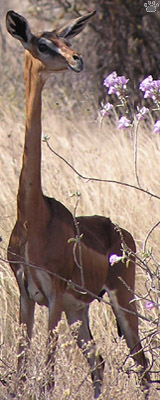 |
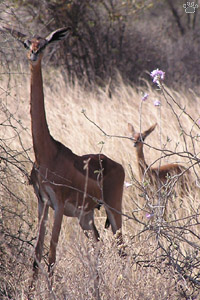
Gerenuk (Litocranius walleri), Samburu
National Reserve, Kenya. |
|
Of many small African antelopes, gerenuks (a.k.a giraffe gazelles) are my personal favorites.
|
They live in arid areas of East Africa, from Tanzania to Somalia and Ethiopia.
|
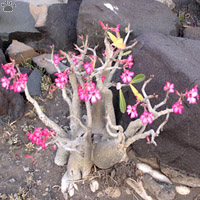
Adenium obesum - a weird plant growing on
lava flows. Lake Natron, Tanzania. |
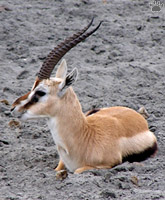
Thompson's gazelle (Gazella thompsoni),
Marsabit National Park, Kenya. |
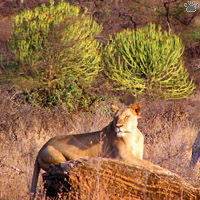
Lioness (Panthera leo) sunbathing under giant
milkweed trees (Euphorbia), Samburu. |
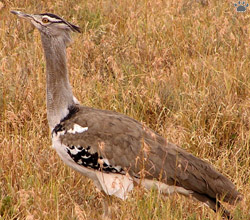
Kori bustard (Ardeotis kori), Tsavo West.
|
Africa has 19 of 25 world's bustard species. Unlike in Eurasia, here they are often common and easy to see. |
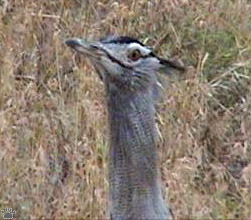
Kori is the world's largest bustard. |
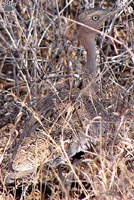 |
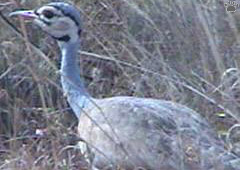
White-bellied (Eupodotis senegalensis, center) and buff-crested (Lophotis gindiana) bustards, Tsavo West.
|
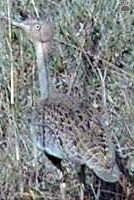 |
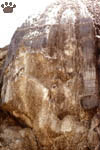
Saltfall, Hoja-Muimin,
Tajikistan |
Among the strange habitats existing
in the deserts, some of the most spectacular are created by salt. Salt mountains
occur in many areas, such as in Iran and Kazakhstan. Hoja-Muimin in Tajikistan
is not the highest one, but it is famous for strange formations, beautiful caves
and unusual flora. Salt plains are usually the most lifeless places in the deserts
- very few plants and animals can survive there. But salt lakes can produce as
much biomass as some forests. Food chains are usually very simple here, with only
3-10 species of algae and invertebrates. |
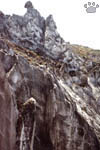
Salt glacier,
Hoja-Muimin. |
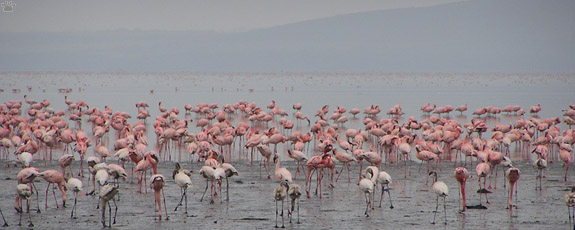
Lesser flamingos (Phoenicopterus minor), Lake Natron, Tanzania. |
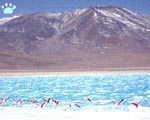
Three species of flamingo (Ph.
andinus, Ph. chilensis, Ph. jamesi),
Lagunas Coloradas, Bolivia. |
Many birds breed at salt lakes, but flamingos seem to be most dependent on them. They breed on salt
lakes in Atacama Desert at 5000 m (17,000') above sea level, and in some of the hottest places on Earth in the rift valleys of Africa. Lakes provide them
with enough food to survive bitter frost and ferocious winds year-round. |
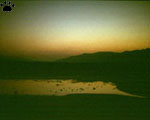
Tiny salt puddle in Death Valley,
California - the only habitat of
Assiminea insima,a small snail. |

Salt, Uvsu-Noor
Lake, Tuva. |

Salt, Salton Sea, California. |
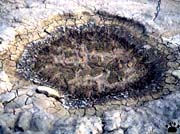
Salt, Willcox Playas, New Mexico. |
| Salt of desert lakes can be beautiful by itself
- you can find all colors and strange shapes. |
|

Salt, Lake Elton,
Russia. |
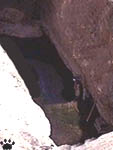
Devil's Hole, Nevada. |
Desert lakes and springs often shelter the most unexpected
desert dwellers - fishes. North American deserts are known for relict populations
of tiny fishes, sometimes endemic to just one hot spring or tiny salty pool. Devil's
Hole, an opening of a flooded cave, is the only place on Earth where pupfish Cyprinodon
diabolis occurs. These 1' (25 mm) fishes, similar to another pupfish pictured
below, live only in shallow water above a granite ledge, 2 sq.m (20 sq. feet)
in size - the smallest natural range known for any vertebrate animal! There are
400-500 fishes in the Hole. Unfortunately, some other desert species are much
less numerous. |
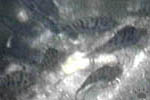 |
 |
 |
 |
| Desert fishes of Nevada, left to
right: spinedace Lepidomeda albivallis, springfish Crenichthys bailei,
both- Crystal Spring; pupfish Cyprinodon nevadensis, Ash Meadows; springfish
C. nevadae, Railroad Valley; spinedace L. altivelis, White River. |
|
 |

Endemic fish, Quatro Cienegas. |
A nice place to snorkel in the desert
is around the town of Quartro Cienegas in Coahuila, Mexico. |

Endemic fish, Quatro Cienegas. |
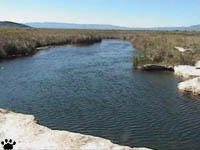
One of many springs at Quatro Cienegas, Mexico. |
This area has spring pools connected
with fast-flowing channels, seven endemic fish species, and stromatolytes - giant
colonies of cyanobacteria, one of the most ancient life forms on the planet. |
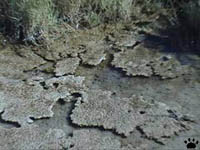
Stromatolytes, Quatro Cienegas. |
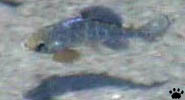 |
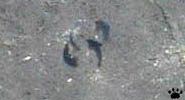 |
 |
| Fishes of Bitter Lakes
National Wildlife Refuge, New Mexico: Pecos pupfish (C. pecosensis) and
Pecos gambusia (Gambusia nobilis). The central photo shows two pupfishes
in a courtship dance. |
| Not all desert fishes are tiny. Some, like chui-ui (Chasmistes cujus) from Pyramid Lake, can be quite large
and support a commercial fishery. But all lead precarious existence in extremely
sensitive habitat. Its alteration, be that draining water for irrigation, cattle
grazing on shores, or introducing non-native fishes, can lead to their immediate
extinction. Many desert fishes on all continents are already extinct, and many
more are endangered. Snails, beetles and other aquatic creatures of the deserts
have also suffered heavy losses. |

Chui-ui,
Pyramid Lake, Nevada.
Catostomus commersoni, Nevada. |
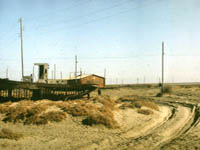
Former Aral Sea shoreline, Muinak, Karakalpakia. |
Even fauna of large lakes and rivers is not safe.
Of the two Asian inland seas, the Caspian have
been severely affected by overfishing and pollution. Its splendidly diverse sturgeon
fauna is now on verge of total collapse. The fate of smaller Aral Sea is even
worse. Two rivers, its only source of fresh water, have been drained for irrigation
almost completely, and the shrinking sea turned into a system of highly saline
lakes and swamps. |
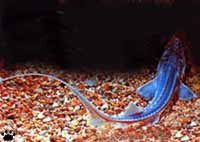
Pseudoscaphorhynchus dybowskii, Tajikistan. |
Of the tree most unique Aral fishes,
the shovelnose sturgeons, one is now extinct, and two survive in vanishingly low
numbers in upper Amudarja river. |

P. paradoxus, Uzbekistan. |
| Lungfishes are the most ancient fishes of the desert.
Their amazing adaptations allow them to survive complete drying of lakes they
live in, by hiding in cocoons built deep into mud, and breathing air. |

Lepidosiren paradoxa, Chaco, Argentina. |
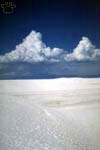
White Sands,
New Mexico. |
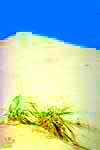
Yellow Sands,
Dagestan. |
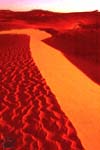
Red Sands,
Uzbekistan. |
Like salt lakes, actively moving sand dunes have
little wildlife, except for small creatures usually found nowhere else. But they
also can be an interesting to see.


Black legless lizard (Anniella pulchra nigra), Sand City,
California. |

Sunset at Sierra del Carmen, Coahuila. |
| Desert mountains are particularly interesting. They
are often teeming with wildlife, especially if they are tall enough to get more
precipitation than surrounding plains. Each such mountain is like an isolated
island in the sky, and it is not unusual to find endemic plants and animals on
mountain tops. Surrounding plains are usually more interesting than those far
from mountains, because water runoff creates sources of water in the desert below.
Even tiny mountains or rocky hills provide endless variety of microhabitats for
large and small animals, from wild sheep to protozoans. |
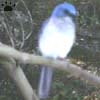
Mexican jay (Aphelocoma
ultramarina), Santa
Rita Mts, Arizona. |
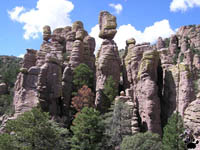 |
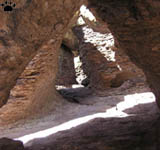 |
 |
| Rock formations in Chiricahua Mountains, one of Arizona's most interesting "sky islands". |
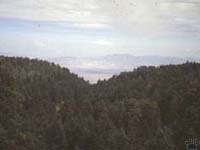
Mount Graham, Arizona. |
Mountains of Sonora Desert in southern Arizona are so high that
some of their summits are covered with fir forests. They are among the most interesting
wildlife habitats in North America. Mountains of Baja California
are also classic "sky islands".
|

Big Bend National Park, Texas. |
| Flower-covered or barren, in spring or in winter,
at sunset or in the moonlight, deserts are always beautiful. There are even beautiful
fall colors in some deserts, although few people
ever notice them. And they are all different, so there is enough for you to watch
during your entire life. |

Bottomless lakes, New Mexico. |

Winter at Mono Lake, California.
Back to Part 2
Home
|



























































